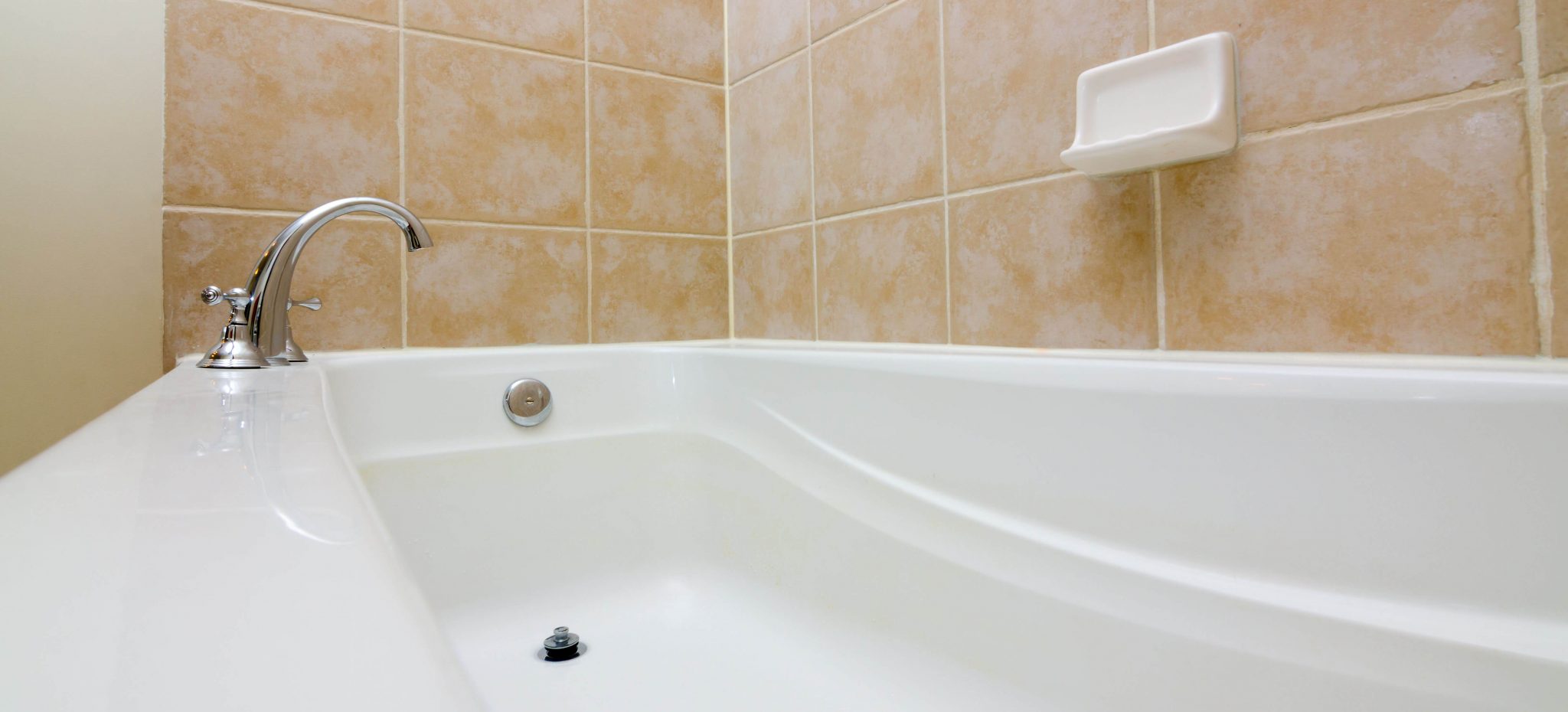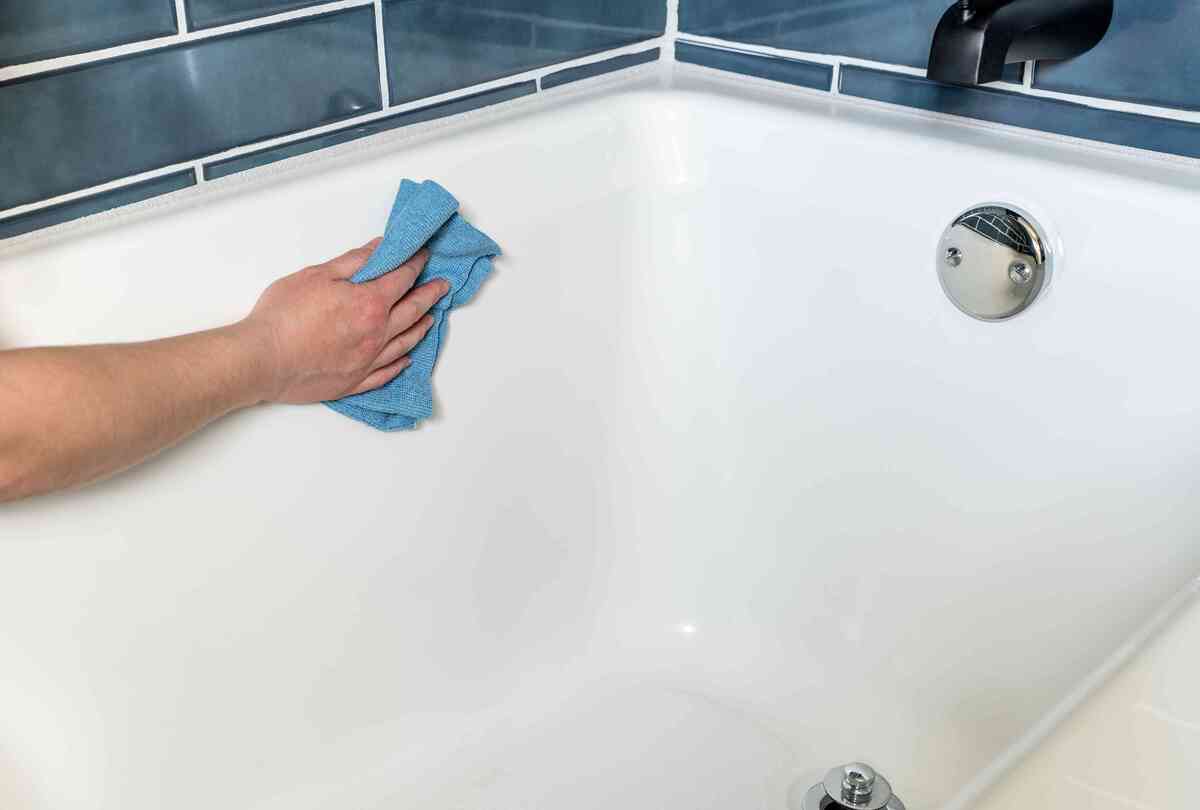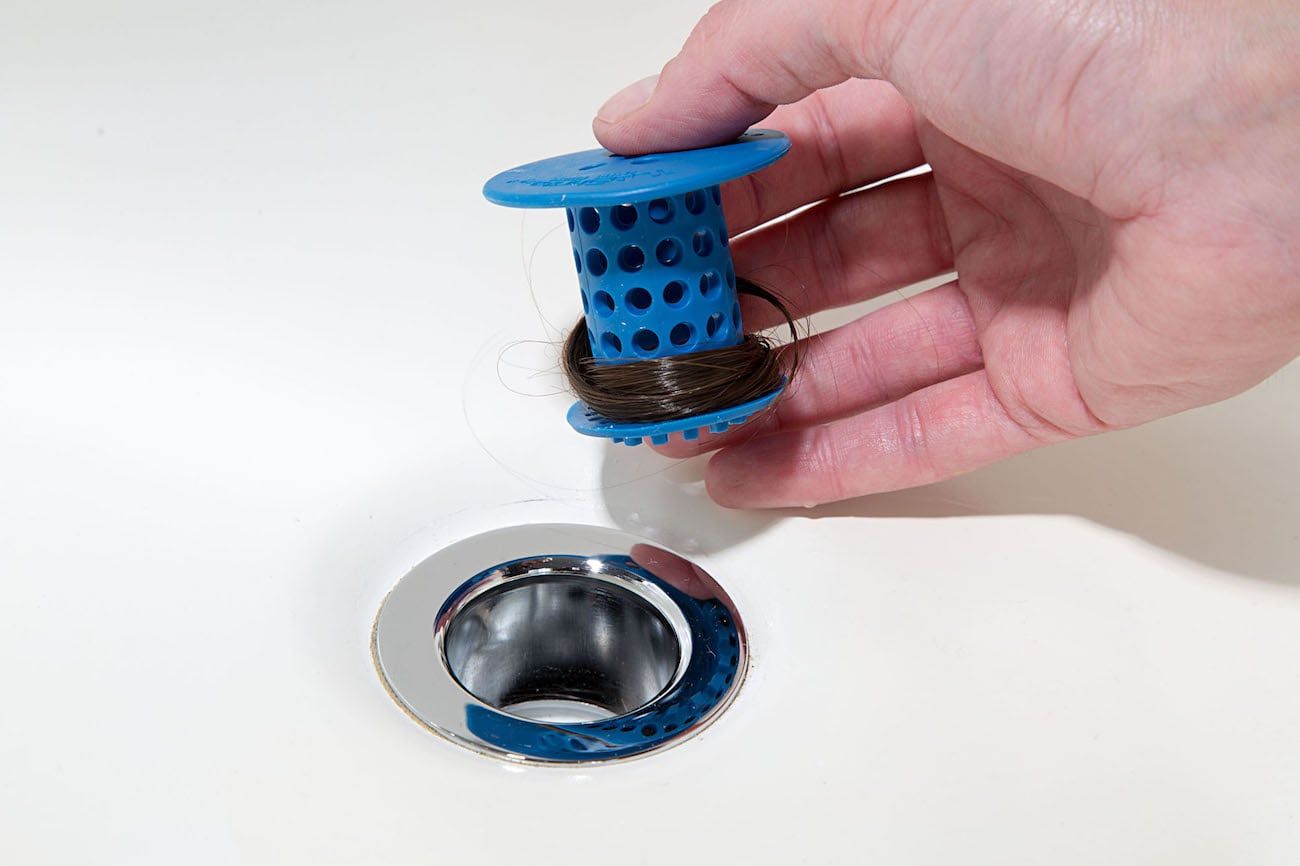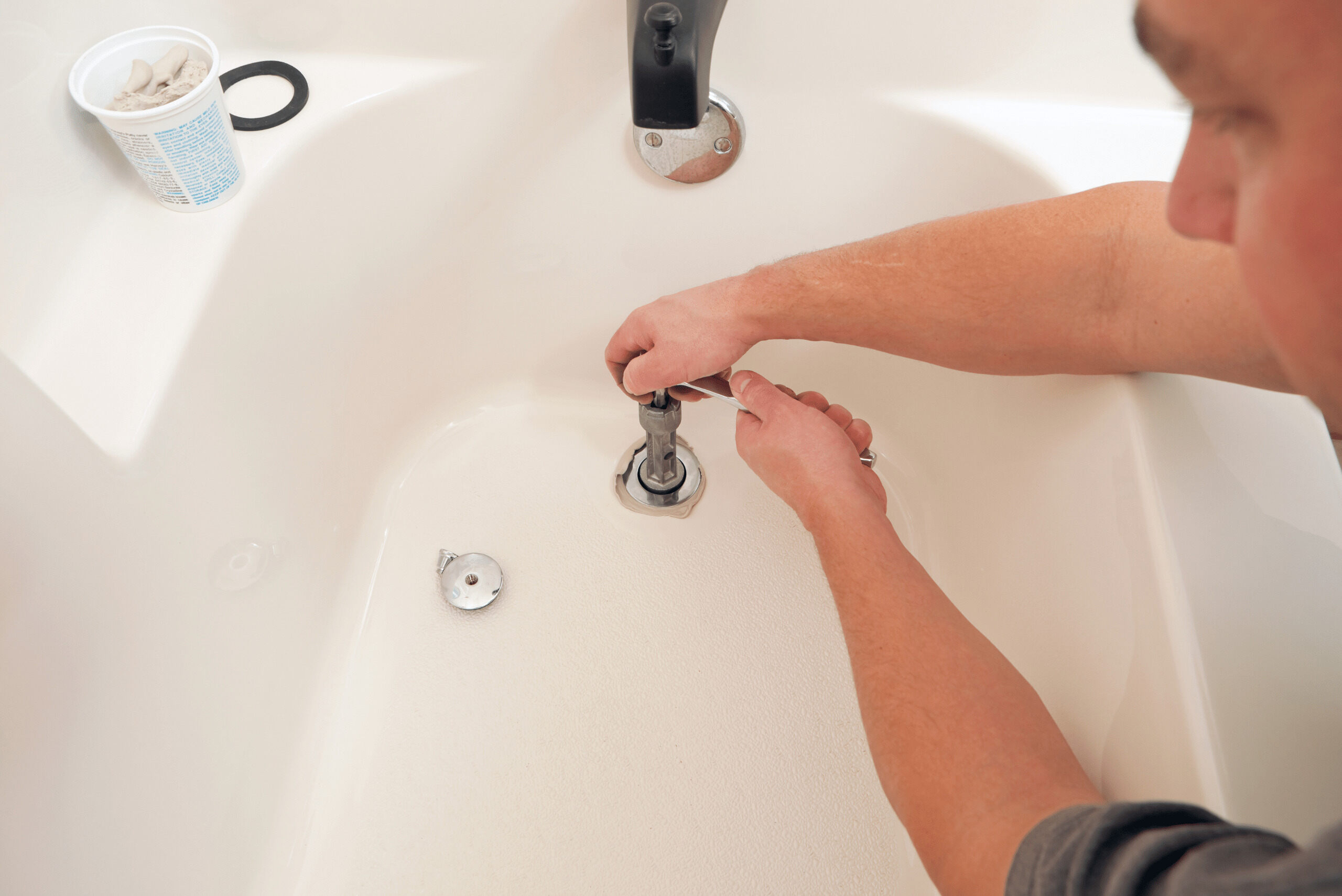Home>Furniture & Design>Bathroom Accessories>How Far Should A Bathtub Drain Be From The Wall


Bathroom Accessories
How Far Should A Bathtub Drain Be From The Wall
Modified: October 20, 2024
Discover the ideal distance for your bathtub drain from the wall and explore essential bathroom accessories for a functional and stylish space. Find expert tips and recommendations here!
(Many of the links in this article redirect to a specific reviewed product. Your purchase of these products through affiliate links helps to generate commission for Storables.com, at no extra cost. Learn more)
Introduction
The placement of a bathtub drain is a crucial aspect of bathroom design and construction. It determines the efficiency of water drainage and can impact the overall functionality and aesthetics of the space. When considering the ideal distance between a bathtub drain and the wall, various factors come into play, including plumbing standards, spatial constraints, and design preferences. Understanding these considerations is essential for ensuring a well-designed and functional bathroom.
The distance between the bathtub drain and the wall is a critical element that affects the installation of the bathtub, the plumbing system, and the overall layout of the bathroom. It is essential to strike a balance between meeting plumbing standards and optimizing the available space to create a comfortable and visually appealing environment.
In the following sections, we will delve into the standard distance for bathtub drains, explore the factors that influence this placement, and discuss potential solutions for limited space scenarios. By gaining insights into these aspects, homeowners, designers, and contractors can make informed decisions to achieve optimal results in their bathroom projects.
Key Takeaways:
- The ideal distance between a bathtub drain and the wall is around 12 inches, ensuring proper installation, functionality, and compliance with building codes. It’s crucial for a safe and efficient bathroom.
- Factors like plumbing layout, space constraints, design preferences, maintenance accessibility, and regulations influence bathtub drain placement. Innovative solutions like compact designs and customized plumbing can overcome limited space challenges.
Read more: How Far Should Toilet Be From Wall
Standard Bathtub Drain Distance
The standard distance between a bathtub drain and the wall is a critical consideration in bathroom design and construction. This measurement plays a pivotal role in ensuring the proper installation and functionality of the bathtub and its associated plumbing system. The typical requirement for the bathtub drain to be from the wall is approximately 12 inches. This distance allows for adequate space to accommodate the drain assembly, including the trap and overflow, while also providing accessibility for maintenance and repairs.
Adhering to this standard distance is essential for ensuring that the bathtub drain functions efficiently and effectively. It allows for proper alignment with the plumbing system, ensuring seamless water drainage and preventing potential issues such as clogging or slow drainage. Additionally, maintaining the recommended distance between the drain and the wall facilitates the installation of the bathtub in a way that promotes structural integrity and stability.
In the context of plumbing standards, the specified distance between the bathtub drain and the wall is established to comply with building codes and regulations. These standards are designed to uphold safety, functionality, and durability in residential and commercial construction projects. By adhering to these guidelines, homeowners, designers, and contractors can ensure that the bathroom space is not only aesthetically pleasing but also structurally sound and compliant with industry regulations.
Furthermore, the standard distance for the bathtub drain from the wall is integral to the overall layout and design of the bathroom. It influences the placement of the bathtub within the space, affecting the visual balance and flow of the room. By maintaining the recommended distance, designers can create a harmonious and well-proportioned layout that enhances the overall aesthetic appeal of the bathroom.
In summary, the standard distance between a bathtub drain and the wall is approximately 12 inches, as per plumbing guidelines and industry standards. Adhering to this measurement is crucial for ensuring proper installation, functionality, and compliance with building codes. By understanding and implementing the standard bathtub drain distance, homeowners and designers can create bathrooms that are both visually appealing and structurally sound.
Factors to Consider
When determining the distance between a bathtub drain and the wall, several factors come into play, influencing the decision-making process for homeowners, designers, and contractors. Understanding these factors is essential for creating a well-designed and functional bathroom space that meets both practical and aesthetic requirements.
1. Plumbing Considerations
The layout and configuration of the plumbing system play a significant role in determining the optimal distance between the bathtub drain and the wall. Factors such as the placement of the main drain line, the location of the trap, and the routing of the overflow pipe can impact the positioning of the bathtub within the space. Ensuring that the bathtub drain aligns with the plumbing infrastructure is crucial for seamless water drainage and efficient operation.
2. Spatial Constraints
The available space within the bathroom directly influences the placement of the bathtub and, consequently, the distance between the drain and the wall. Limited space may necessitate strategic planning to accommodate the bathtub while adhering to the standard distance requirements. Designers and homeowners must consider spatial constraints when determining the optimal positioning of the bathtub to maximize functionality without compromising on aesthetics.
Read more: How Far Away From House Should Gutters Drain
3. Design Preferences
Personal preferences and design considerations also play a significant role in determining the distance between the bathtub drain and the wall. Designers and homeowners may have specific aesthetic goals or layout preferences that influence the placement of the bathtub within the space. Balancing design preferences with practical considerations is essential for creating a cohesive and visually appealing bathroom environment.
4. Accessibility and Maintenance
The accessibility of the bathtub drain for maintenance and potential repairs is a critical factor to consider. Ensuring adequate space around the drain area facilitates ease of access for maintenance tasks, such as clearing clogs or addressing plumbing issues. Designing the layout with maintenance in mind can contribute to the long-term functionality and durability of the bathroom space.
5. Building Codes and Regulations
Compliance with building codes and regulations is non-negotiable in construction and renovation projects. The specified distance between the bathtub drain and the wall is often dictated by industry standards and local building codes. Adhering to these regulations is essential for ensuring the safety, structural integrity, and functionality of the bathroom space.
By carefully considering these factors, homeowners, designers, and contractors can make informed decisions regarding the placement of the bathtub drain in relation to the wall. Balancing plumbing requirements, spatial constraints, design preferences, accessibility, and regulatory compliance is crucial for creating a well-designed and functional bathroom that meets both practical and aesthetic needs.
Solutions for Limited Space
When faced with limited space in a bathroom, optimizing the placement of a bathtub and its associated drain becomes a critical challenge. However, several innovative solutions can be employed to address spatial constraints while ensuring the functionality and aesthetic appeal of the space.
Read more: How Far Out Should A Ladder Be From A Wall
1. Compact Bathtub Designs
Opting for compact or space-saving bathtub designs can significantly alleviate the impact of limited space. Freestanding or corner bathtubs are excellent options for maximizing available space while maintaining a stylish and functional bathroom layout. These designs allow for flexibility in placement, enabling homeowners and designers to position the bathtub in a manner that optimizes space utilization without compromising on comfort.
2. Wall-Mounted Fixtures
Incorporating wall-mounted fixtures, such as faucets and showerheads, can contribute to space efficiency around the bathtub area. By eliminating the need for traditional floor-mounted fixtures, wall-mounted options create a streamlined and visually uncluttered environment. This approach not only conserves space but also enhances the overall aesthetic appeal of the bathroom.
3. Customized Plumbing Solutions
In scenarios where space constraints pose challenges for standard bathtub drain placement, customized plumbing solutions can offer viable alternatives. Tailoring the plumbing configuration to suit the available space allows for greater flexibility in positioning the bathtub and its drain. Creative plumbing adjustments, such as repositioning the drain or utilizing space-efficient trap designs, can help accommodate the bathtub within confined areas while adhering to plumbing standards.
4. Recessed Niche Installations
Integrating recessed niches within the bathroom layout provides an opportunity to optimize space around the bathtub area. Installing a recessed niche adjacent to the bathtub allows for the efficient placement of the drain while creating additional storage or display space. This solution not only addresses spatial limitations but also enhances the functionality and visual appeal of the bathroom.
Read more: How To Stop A Bathtub From Draining
5. Collaborative Design Approaches
Engaging with experienced designers and contractors can yield innovative and tailored solutions for limited space challenges. Collaborative design approaches enable the exploration of custom-fit options that align with the specific spatial constraints of the bathroom. Leveraging the expertise of professionals can result in creative and practical solutions that optimize the placement of the bathtub drain while maximizing the available space.
By implementing these solutions, homeowners and designers can overcome the challenges posed by limited space when determining the distance between a bathtub drain and the wall. Embracing innovative designs, customized plumbing solutions, and collaborative approaches empowers individuals to create functional and visually appealing bathrooms, even within confined spaces.
Conclusion
In conclusion, the placement of a bathtub drain in relation to the wall is a critical consideration in bathroom design and construction. Adhering to the standard distance of approximately 12 inches between the bathtub drain and the wall is essential for ensuring proper installation, functionality, and compliance with building codes and regulations. This standard distance is established to uphold safety, efficiency, and structural integrity within the bathroom space.
When determining the optimal distance between the bathtub drain and the wall, several factors must be carefully considered. Plumbing considerations, spatial constraints, design preferences, accessibility for maintenance, and regulatory compliance all play pivotal roles in the decision-making process. Balancing these factors is crucial for creating a well-designed and functional bathroom that meets both practical and aesthetic needs.
Furthermore, when faced with limited space challenges, innovative solutions such as compact bathtub designs, wall-mounted fixtures, customized plumbing configurations, recessed niche installations, and collaborative design approaches can effectively address spatial constraints while maintaining the functionality and visual appeal of the bathroom.
By understanding the standard distance requirements, considering relevant factors, and leveraging creative solutions, homeowners, designers, and contractors can navigate the complexities of bathtub drain placement to create bathrooms that are both aesthetically pleasing and structurally sound. Embracing a holistic approach that integrates practical considerations with design preferences is key to achieving optimal results in bathroom design and construction.
Ultimately, the distance between a bathtub drain and the wall is not merely a technical detail but a critical element that contributes to the overall comfort, functionality, and visual harmony of the bathroom space. By prioritizing these considerations, individuals can embark on bathroom projects with confidence, knowing that they are creating environments that are both practical and visually captivating.
Frequently Asked Questions about How Far Should A Bathtub Drain Be From The Wall
Was this page helpful?
At Storables.com, we guarantee accurate and reliable information. Our content, validated by Expert Board Contributors, is crafted following stringent Editorial Policies. We're committed to providing you with well-researched, expert-backed insights for all your informational needs.













0 thoughts on “How Far Should A Bathtub Drain Be From The Wall”